Information about Air Quality & Smoke
Overview
What to Expect
Wildfires present many dangers to human health and infrastructure, but the actual fire is not the only hazard we must prepare for. As wildfires continue to increase in frequency and magnitude, the smoke from fires within Idaho and across the Western U.S. will travel to our region. Smoke causes poor air quality that can endanger our health and put a strain on our economy by forcing residents indoors and negatively impacting tourism.
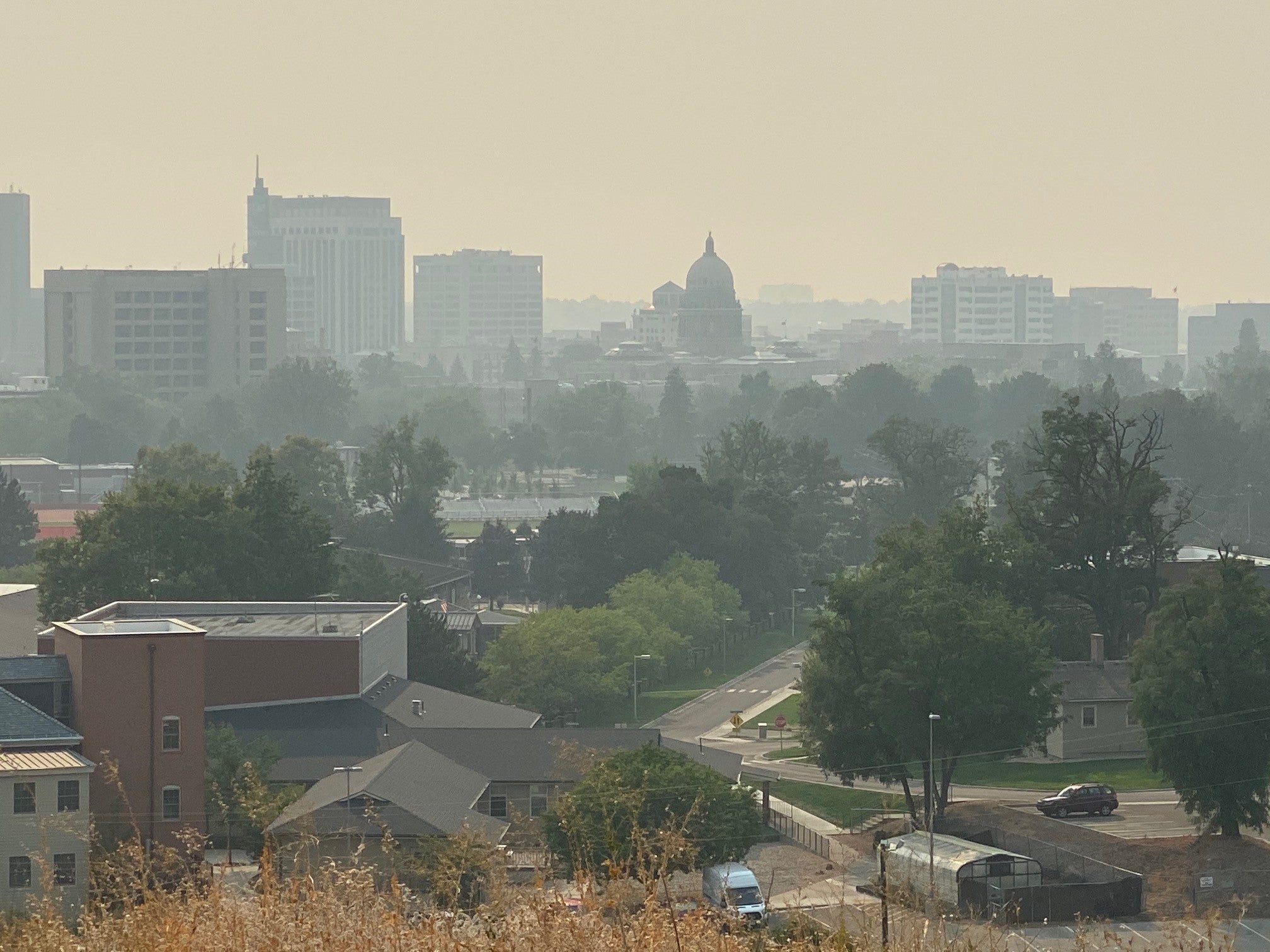
Wildfire smoke can travel hundreds of miles downwind. Coarser particles (what you might think of as ash) typically fall out closer to the fire. However, the smallest particles, which pose the greatest risk to health, travel the furthest. Additionally, smoke which has ‘aged’ as it travels through the air can interact with the sun and other atmospheric chemicals, making it more toxic.
Wildfire smoke contains tiny PM 2.5 particles (around 1/50 the size of a grain of sand). These particles can be inhaled deep into the air sacks of your lungs, causing lung inflammation. While short term exposure irritates the eyes and throat, long term exposure can cause lung damage and possibly cardiovascular problems. Those with preexisting lung or respiratory conditions are most vulnerable, although anyone can be affected. The long term impacts of wildfire smoke are less well understood, potential impacts include reduced lung function, heart-related complications, and potentially more systemic effects (e.g., brain or reproductive impacts).
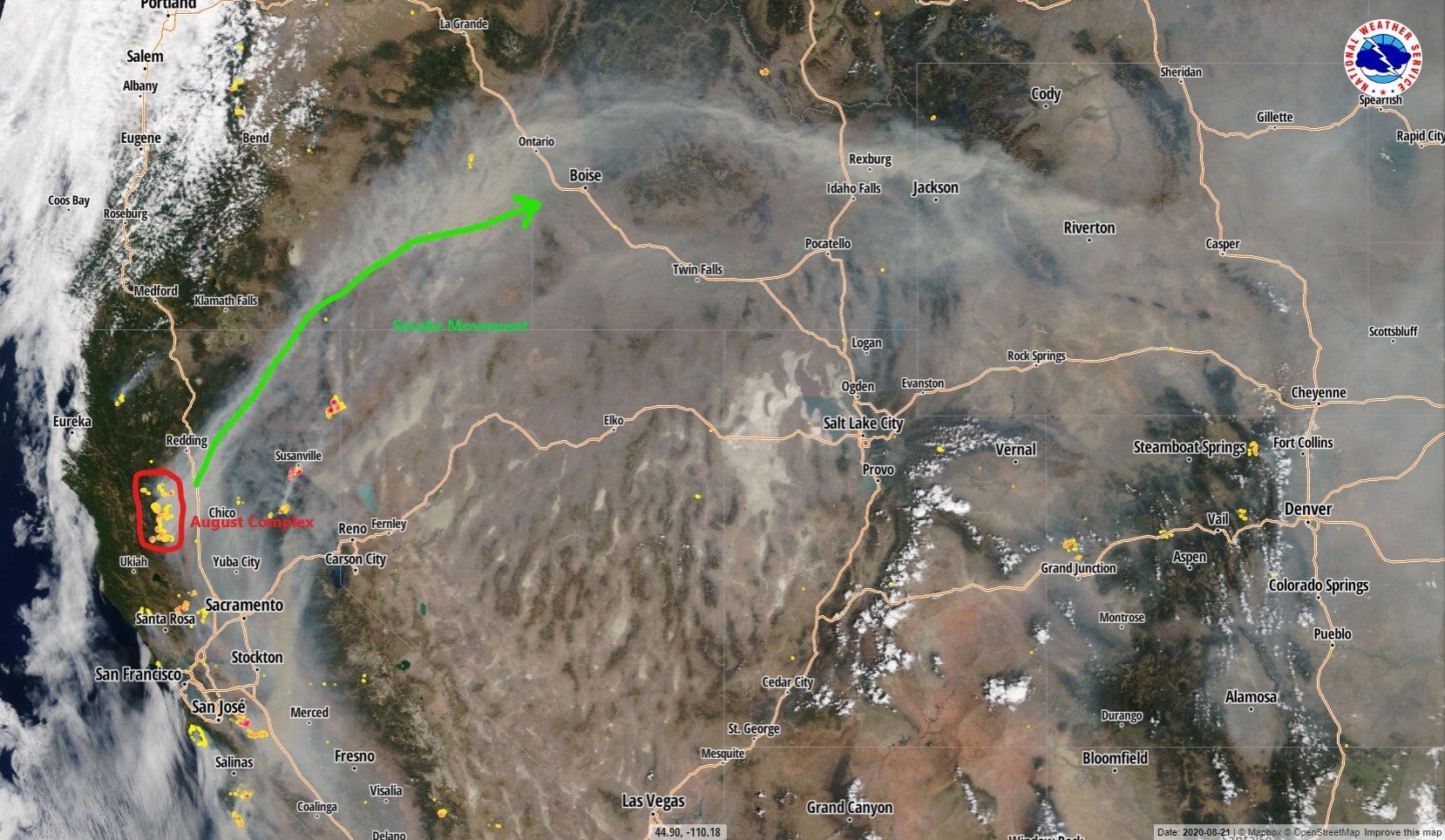
Another cause of poor air quality in the Treasure Valley is a temperature inversion — where a layer of warm air traps cooler, more dense air below (NOAA). Because inversions cause air stagnation, air and pollutants such as wood smoke, car exhaust, and factory emissions become trapped near the surface (see figure below). This results in hazy conditions and poor air quality. If there is enough moisture present in the valley, foggy conditions will develop as well. Inversion season typically lasts from late November through mid-February in Southwest Idaho and Southeast Oregon.
The National Weather Service (NWS) in Boise issues air stagnation advisories when an inversion is expected to cause stagnant air. These help the Idaho and Oregon Departments of Environmental Quality (DEQ) make decisions about issuing air quality alerts and burn bans. By heeding the recommendations and mandates from the DEQ, we can reduce the amount of pollution trapped in the Treasure Valley during a long-lasting temperature inversion, and ultimately ensure the air we breathe is healthy.
Be sure to check air quality conditions regularly during inversion season, and consider modifying outdoor activities if air quality reaches unhealthy conditions.
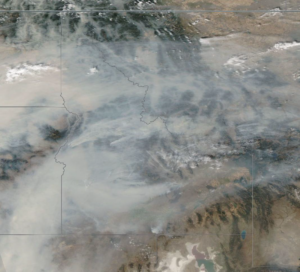
Worst-Case Scenario
Poor Air Quality Due to Wildfire Smoke:
One worst-case scenario would be smoke from fires that gets trapped in our region by stagnant air or otherwise calm winds. Until either (1) the wind increases in speed and changes direction, or (2) precipitation falls and clears the air of smoke particulates (e.g., PM 2.5), hazardous air quality would prevail across the Treasure Valley, putting vulnerable populations at risk for adverse health effects. The combination of these smoke particulates with industrial pollution and vehicle emissions can make matters even worse, especially on hot days, which are already hard on the populations most vulnerable to air quality-related illnesses. This scenario most recently occurred in 2020, when the air quality index for the Treasure Valley reported “unhealthy” air quality levels for multiple days due to a buildup of smoke from numerous upwind fires.
Poor Air Quality Due to Cool Season Temperature Inversions:
Another worst-case scenario would be a long-lasting temperature inversion which would allow industrial pollution to accumulate in the lowest part of the atmosphere for multiple weeks. In this situation, if Treasure Valley residents do not heed burn bans from Idaho and Oregon DEQ or Air Stagnation Advisories from NWS Boise, the continued industrial emissions would add enough pollution to the lower atmosphere to cause air quality levels to reach unhealthy levels. As a result, breathing the air could result in various health effects, especially for vulnerable populations.
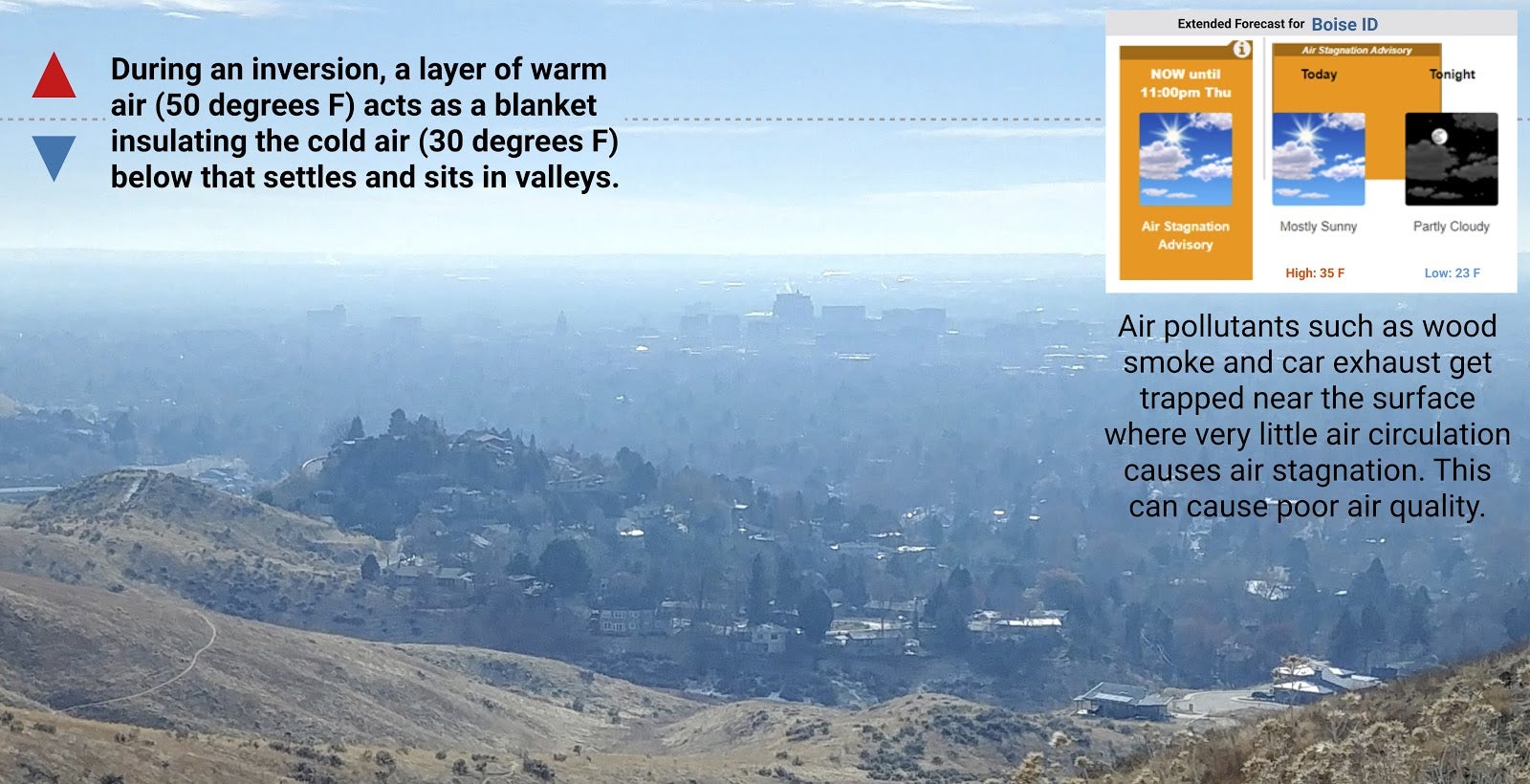

How to Prepare
How to Prepare
- Stay informed by signing up for daily air quality notifications from AirNow.
- Complete a wildfire smoke protection plan, and check in with your medical provider to learn if you should take any special precautions to protect your health.
- Pay attention to your health and when the smoke is affecting you. Eyes, nose, and throat irritation are the first signs that your body needs a break from the smoke (source: CDC)
- If you are in a sensitive group (older adults; young children; people with lung disease and/or asthma), take extra caution when the air quality is ‘Unhealthy for Sensitive Groups’. Consider taking more breaks from the outdoors and doing less intensive activities.
- Avoid or limit outdoor activity (especially strenuous activity) when the air quality is ‘Unhealthy’.
- Purchase a low-cost indoor air monitor to better understand how your indoor air is impacted by outdoor air, and if further air purification systems are needed.
- Watch this tutorial for a do-it-yourself guide for making a low-cost air purification device.
- Designate a “safe air space” in your home, or see if your work or community has one. These are spaces where folks can get a break from the smoke, and often consist of a room with an air purifier or air conditioning.
- If you choose to wear a mask, please note that only well-fitted N95 masks or P100 respirators filter PM 2.5 particles (source: Why is Wildfire Smoke Bad for You?).
Local Resources
Local Resources
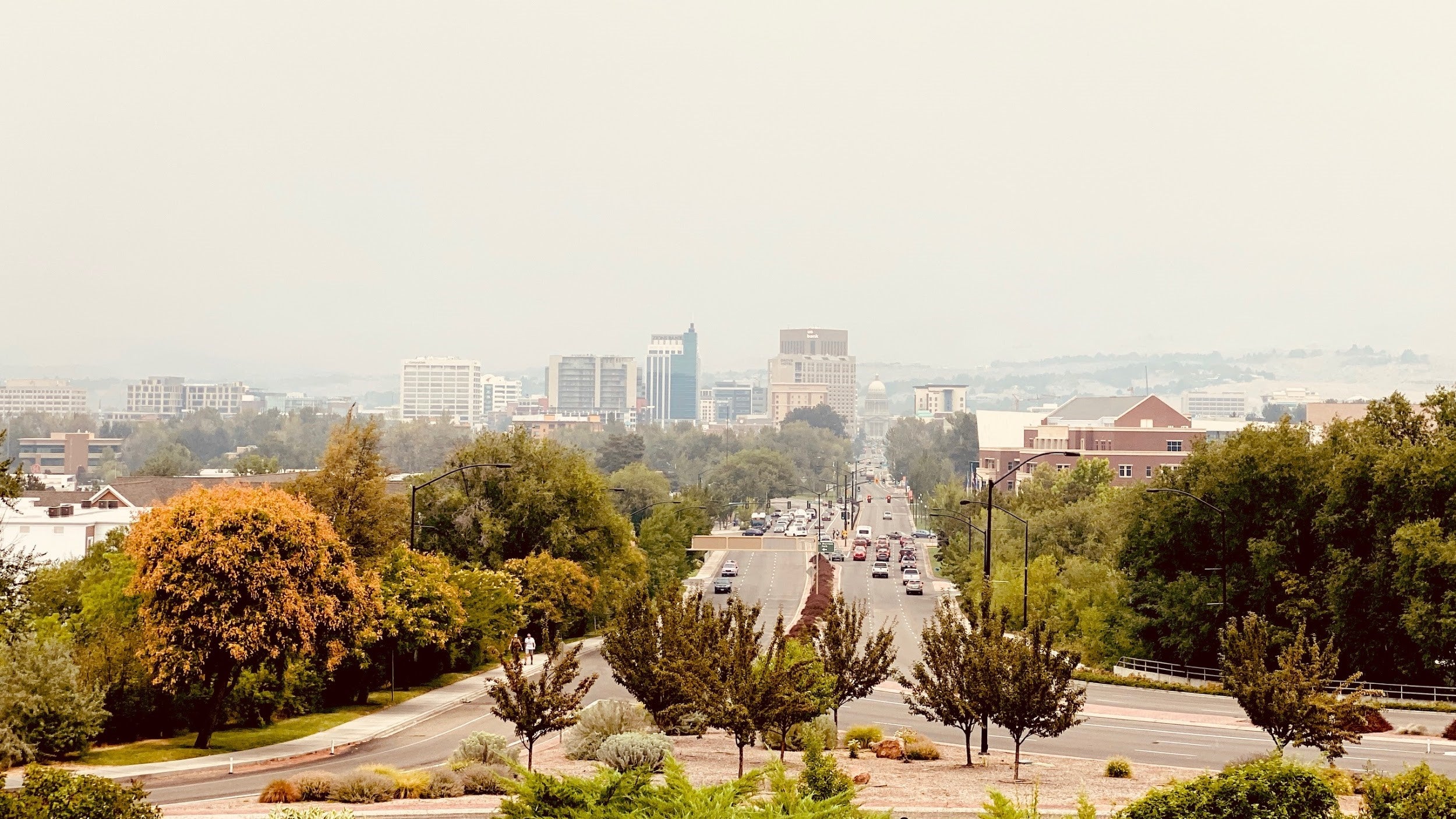
-
- Follow the Idaho Department of Environmental Quality’s wildfire smoke information page.
- Check out the NOAA Smoke Prediction Model – go to ‘vertically integrated smoke’ in the table, and click on the check mark under the ‘Loop’ column.
- National Weather Service (NWS) Boise, Idaho
How is this hazard impacted by a changing climate?
A warming atmosphere is driving larger, more intense, and more frequent wildfires. More fire means more smoke pollution. Air quality and opportunities for recreation or tourism will be affected. High levels of smoke pollution also creates an uptick in emergency room visits, placing a burden on our hospitals (source: Yale Climate Connections, American Heart Association).
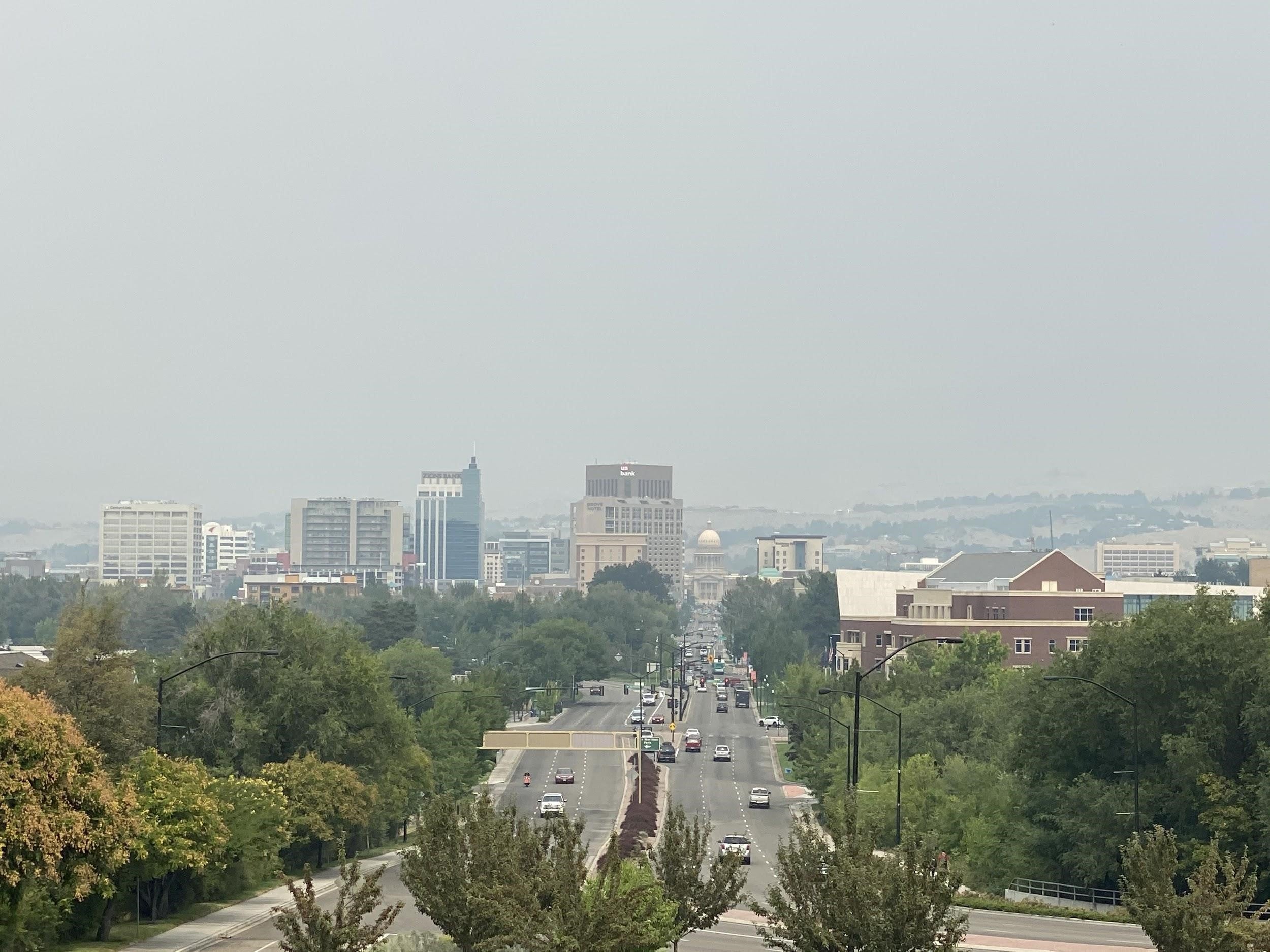
Written by Austin Walkins, Idaho Conservation League, John Bumgardner, 2020 NOAA-NWS Intern and Luke Montrose, Boise State Department of Community and Environmental Health and HCRI